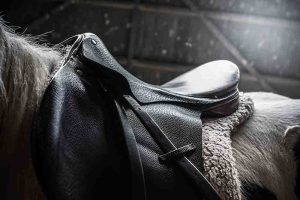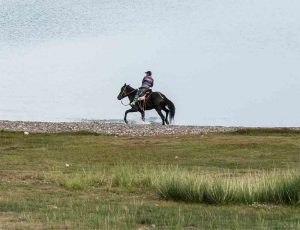So, you’ve watched show jumping competitions and events and marvelled over the elegance and skill of both the horse and their rider; dreaming of a day when you’ll be able to gallop gracefully around an event course and take that first place position… pause right there – firstly you need to know the basics of horse riding. Of course you can’t learn how to ride a horse from reading up on the internet, but this guide to horse riding will help you think about the different factors involved. Make sure you’re prepared for beginning on your horse riding adventures.
Finding a good instructor
Teaching yourself to ride isn’t advisable. Finding a good riding school or credible independent instructor will ensure you are in the safest possible environment for you and your horse. The instructor will take you through everything at your own pace and also be able to iron out any bad habits you may pick up before they become set into your riding routine. Watching a lesson before you sign up to a school can give a good indication of the standard of the school.
Riding wear
Although you may want to run out and get shiny bright new riding wear, STOP. Wait until you are sure you know this is something you will continue to do before spending on the clothing and equipment needed. Riding schools should be able to provide beginners with hats for the first few lessons until you’re ready to take the plunge and invest. Wear comfortable trousers, nothing too loose as you need something that will sit to the leg and not alarm the horse by flapping around. For footwear it is advised to wear a boot or shoe with a small heel. You’re all kitted out and ready to begin!
Tie, groom and lead
If you’re new to horses then learning to tie, groom and lead your horse is the first step. This will help you get acquainted and learn more about horses and should make you feel more confident about riding. Tie up the horse to make sure they are secure and ready to saddle up. Grooming will ensure the horse is clean before putting the saddle on so no dirt will rub and cause saddle sores.
Saddle up
Saddling up correctly is absolutely key before you ride. There are two types of horse riding, western or British, but essentially the basics of saddling up are the same. This should be something you can master quite easily. You may be asked to ‘tack up’ and this is a term used to refer to the equipment from the saddle to the saddle pad and from the bridle to the stirrups.

A basic rundown of steps you’ll follow:
- Put the saddle pad on the horse
- Slide the stirrups on the straps
- Place the saddle over the saddle pad
- Buckle the girth on the right side first and then the left
- Slide the stirrups down the straps
- Check the girth is secure enough
Bridle up
If you crack the saddling up then the next step should be a doddle for you. Firstly you need to untie your horse and follow your instructors guidance which should be as follows:
- Place the reins over the horse’s neck
- With your fingers on either side of the bit, push this gently into the horses mouth
- Slide the head piece over the horses ears
- Loosely fasten the throat buckle
Mounting a horse
Here comes the exciting part… mounting the horse! It may seem a bit daunting at first and you may be asking ‘how am I going to get all the way up there?’, but do not fear. Once you have practiced and perfected your technique it will become second nature and you’ll be mounting the horse with no problems. If, in the beginning, you do find it a struggle you can use a mounting block or drop the stirrups a few holes.
First time walking
The first time you mount your horse and begin walking it will feel you will feel unbalanced and possibly uncomfortable – don’t worry! Feeling unbalanced and uneasy is normal until you get into a rhythm with the horse. With practice you’ll begin to understand the different elements your body positioning should be undertaking for a smooth ride. You’ll also be working muscles you didn’t even know existed – working out while having fun is always a bonus!
The more you practice you’ll gain confidence and soon be ready to move on to trotting, jogging and cantering. Never move ahead with something unless you are ready. Always make sure you feel safe and if you have any questions then always ask your instructor.
Dismounting your horse
Don’t worry, this shouldn’t be as tricky as mounting your horse but does require some skill. Firstly, ensure your horse is at a quiet standstill and then follow these steps:
- Remove your feet from the stirrups
- Hold on to both reigns with your left hand, you may want to include a small amount of the mane to help steady yourself
- With both hands on the horses neck shift your weight to your arms – your seat should slightly lift out of the saddle
- Swing your leg up and over the horse’s haunches enough to clear the saddle and not hit the horse. As you do this push yourself away from the horse so you land clear
- Make sure that you bend your legs on landing to minimise impact on your knees
Once on the ground you can then lift the reins over the horses head. Hold one hand under the horses chin and the other with the excess of the rein so you are able to lead it.
Always practice safe riding for you and the horse and enjoy yourself and be aware of your surroundings. A well rested horse will bring bundles of enjoyment whilst riding. Take a look at the Mayo Horse Comfort range of premium horse matting to look after your horse as they deserve.
We hope this guide to horse riding has been helpful, if you have anything to add we’d love to hear from you.
